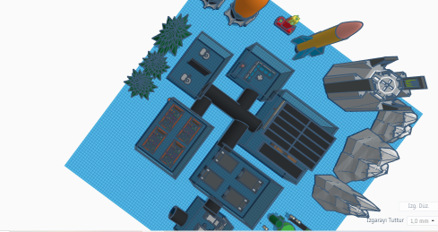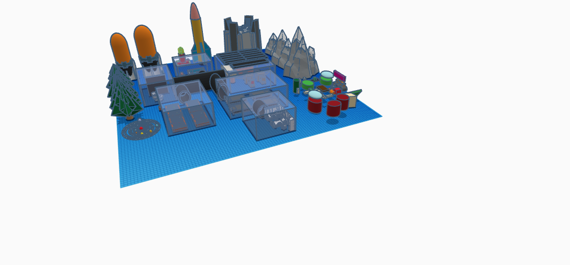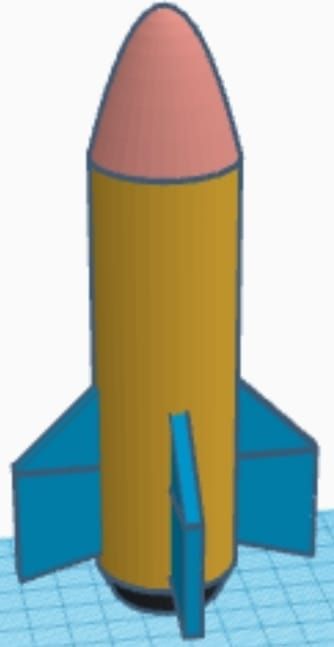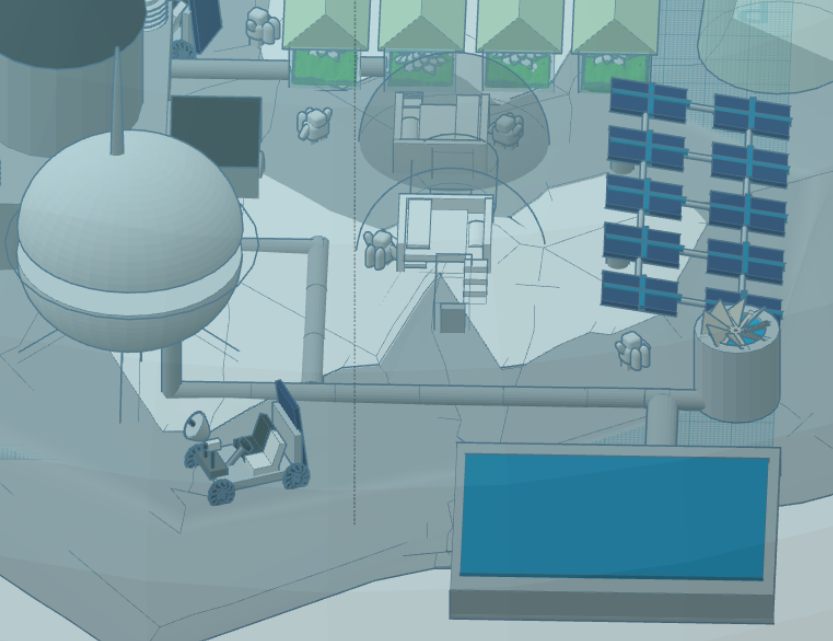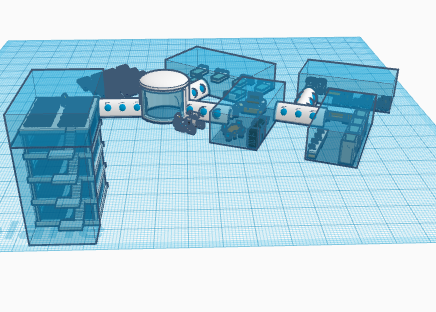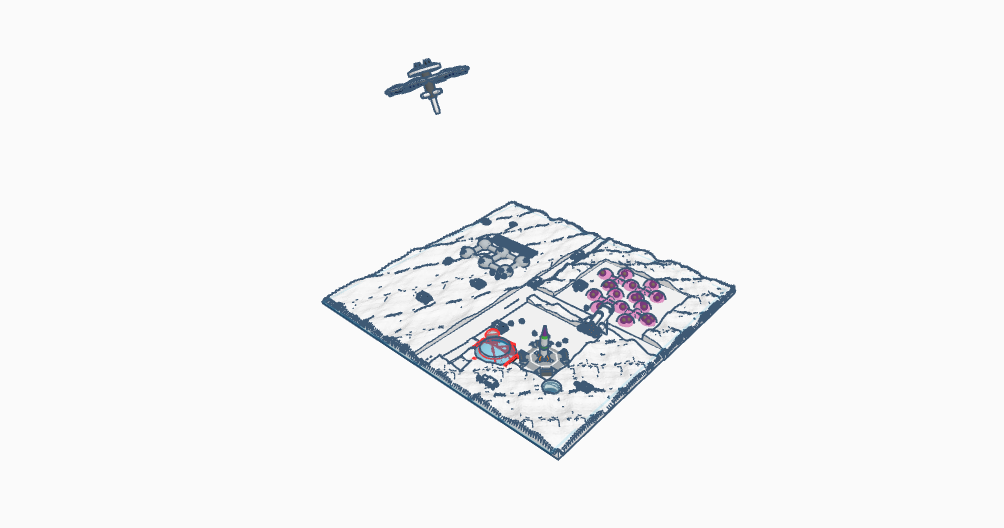Moon Camp Explorers Gallery 2021-2022
In Moon Camp Explorers each team’s mission is to 3D design a complete Moon Camp using Tinkercad. They also have to explain how they will use local resources, protect astronauts from the dangerous of space and describe the living and working facilities.
Team: LUNA
Kusadasi Makbule Hasan Ucar Anatolian High School Aydin Turkey 14 5 / 4
External link for 3d
|
Project description
Our base is a base that can shelter and help our astronauts with their work. They’re going to have a place they can sleep, a meeting room, an infirmary, a kitchen, a bathroom, a work place and a greenhouse. It’s going to get its energy from sun panels. The purpose of our base is getting more information about the moon for our and the next generations and researching the living standards. Our base is going to be constructed to protect itself against various dangers. |
||||
|
Where do you want to build your Moon Camp?
Shackleton crater Why did you choose this location?
With the moons physical condition in mind, we have found the best place to be the SHACKLETON crater in the South Pole region. The reasons are; a. You can get more of the needed energy in the poles than any other region, b. There’s more hydrogen reserves for the spaceships on the pole compared to other regions, c. The South Pole region is the best place to get information about the moons natural state and harbors different types of natural resources, are a few of the reasons why we chose this crater. How do you plan to build your Mooncamp? Which materials will you use?
The buildings on the moon are going to be constructed on the flexible and regolith floor. The floor being flexible is going to be an advantage for the use of the buildings. Because of the lunar environments abrasive external influences and the thermal difference, the resulting negative conditions will affect the building. To protect the building of these conditions, we can use the regolith material to create a protective layer and prevent abrasiveness, instead of different materials. All of the walls will be airtight and resistant. |
||||
|
Water
|
Food
|
Electricity
|
Air
|
Protection
|
|
For the hydration of our astronauts we are going to melt the ice we gain from the moon’s surface and filter all of the dirty water (i.e. the melted ice, urine, etc.) |
To feed our astronauts we are going to get special food packages from earth and obtain food from our special greenhouse. |
We are going to use sun panels. Except since the moon isn’t going to be turned to the sun at all times a part of the energy is going to be saved for later use. We are going to predict the spot that gets the most sunlight and reach a cable to the rooms that need the most electricity. With the electricity that we produce we can use the same recycling system used in the rocket ships. The greenhouse won’t use up much energy as long as there is sun but when needed the stocked energy can turn into light and heat energy. To take care of all these energy needs we might need at least 10 different sun |
We’re going to take care of our oxygen need by extracting it from ice water. To separate hydrogen and oxygen we are going to send an electricity wave, then – since the hydrogen is lighter– the hydrogen will rise and we will collect the oxygen. |
When there is a meteor problem, we are going to break the meteors apart with a laser machine. That way the danger will be gone. |
|
Describe a day on the Moon for one of your Moon Camp astronauts
For a good-night’s sleep the astronauts have beds. After they wake up they are going to eat the special packages from earth and the vegetables from the greenhouse. After eating, they’re going to split according to their areas. 2 people will start research and another 2 is going to go out to explore. After a 3 hour work it will be time for lunch. After lunch there will be an hour break and after the break they will continue to work for 2 hours (any group can go out to explore). After the astronauts are finished with their research they are going to eat dinner and will have time to do whatever they want (an hour). Then they will sleep |
||||





